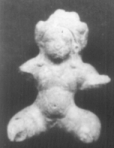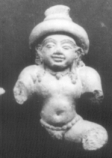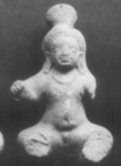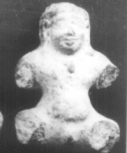.
Ancient Terracotta Sangam Period 1500 Year old Pooluvampatti near Perur
|
From
time immemorial, Kongunadu has been in existence as "The home of Tamilians".
The history of Kongunadu dates back to the 8th century AD. The name Kongunadu
originated from the term "Kongu", meaning nectar or honey. Kongu came to
be called as Kongunadu with the growth of civilization. The ancient Kongunadu
country was made up of various districts and taluks which are currently
known as Palani, Dharapuram, Karur, Nammakkal, Thiruchengodu, Erode, Salem,
Dharmapuri, Satyamangalam, Nilgiris, Avinashi, Coimbatore, Pollachi and
Udumalpet. Kongunadu was blessed with enormous wealth, a pleasant climate
and distinct features. Kongunadu was ruled over by The Chera, Chola, Pandya,
Hoysala, Muslim rulers and finally the British.
The Kongu country was one of the earliest territorial divisions and home of the ancient Tamilians. It figures in the earliest Tamil literature that, it has acted as the pass for foreign powers to penetrate or capture the Tamil country. The people of the Kongu country had preserved a characteristic type of culture which seemed to be the sustainable derivation of early "Tamilians"of the south. The puzzling megalithic culture had been widely in vogue in the Kongu country. The migration of the Vedic people into the heart of the Tamil country also seemed to have taken its route through the Kongu country. They entered the mountain passes of the Satyamangalam Ghats as the first settlers of the Brahminical sect called "The Brahatcharanam". In earlier times the Three Sovereigns of the Tamil country were the Cheras, the Cholas, and the Pandyas. There is a mention that the victory over the Kongu country to be one of the greatest events in their war-like annals. The history of the Kongu country was an integral saga and was of great value for the compilation of the history of Tamilnadu as a whole. In the dawn of historical period, the ancient Kongu country was ruled over by the Velir chiefs. An active trade between Kongu and the classical Roman world had attained it's peak during that period. After the close of the Sangam epoch from about 300 A.D.- 600 A.D., there is almost a total lack of coherent information regarding events in this Tamil land. It was said that the Kalabaras, who were described as the evil rulers overthrew many kings of the land and got a strangle hold of the country. The South-Western part of Kongu was under the control of the Chera kings who were then confined only to the Southern part of the present Kerala. The South-Eastern Kongu was in possession of the Pandya kings. The copper plates of the early Pandya rulers of this period have also been discovered. The Atiya chiefs and the Kadavas held posession over some parts of Northern Kongu. This dynasty throws more light on the many unsolved problems of the history of Tamilnadu. The Hindu religion made considerable progress during that period. Sundaramurtigal, one of the four great Nayanmars who lived in that period had visited the Temples of Kongu. Art and Architecture also flourished with elegance as in the other parts of the Tamil land and some masterpieces of stone sculpture of the Kongu style came into existence. Literary activities also increased. "Perumkatai" a Tamil version of the Brahatkata, Purap-porul, Venbamalai were composed during that period. During the later half of the 9th century, the entire Kongu, except the south and south-western parts fell into the hands of the imperial Cholas of Tanjavur, while the south and south-western parts of Kongu were still under the control of the Pandyas and the Chera kings of the Perumal dynasty. By the middle of the 10th century, Kongu came under autonomous rule of the members of the collateral Chera family. They bore the titles and the name of the imperial Cholas. The collateral Chera rulers ruled over Kongu for nearly 300 years and after their decline, the Pandyas took possession for some time. The Hoysala kings also ruled over Kongu after the Pandyas. Then Kongu fell under the muslim rule. The Kilji sultans of Delhi, after consolidation of their power in northern India, began to cast their covetous eyes on the south and they were followed by Thughlaks. Colonies of muslim soldiers found lodgement in several parts of the country.Temples were plundered and demolished and mosques were erected in numerous places. Hindu society faced a new peril during that period. The Vijaynagara kingdom emerged to counteract all this. It was in Kongu that the Vijayanagara rule was first established before it expanded to the other parts of the Tamil land. During this period the outlook of hindus developed new standards. The literature and the temple arts again began to grow afresh. Telugu and Kannada languages were given large support and great encouragement. Telugu and Kannada people such as the Kammalars, Kaikolars, Reddis established their settlements in the Kongu country during this period. The rule of Vijayanagara dynasty was succeeded by the Nayakka rule of Madurai and after them Kongu was occupied by the Mysore rulers. After the fall of Tippu Sultan at Srirangappattinam, Lord Wellessly made a series of political arrangements and the territories were taken over by the British. Kongu also came under the British rule in 1799 A.D. The
Chera Rulers of the Sangam Period
|


